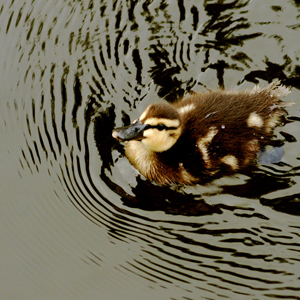Swimmer’s Itch (Cercarial Dermatitis)
Have you ever had small red spots, similar to insect bites, appear on your skin after swimming in a lake?
Well, you may have had swimmer’s itch (or also called Cercarial Dermatitis)!
But what is swimmer’s itch?
Swimmer’s itch is a skin condition caused by microscopic larvae found in certain bodies of water. These larvae, called cercariae, stick to the skin until the person gets out of the water. Then, once your skin is dry, if these cercariae are not dislodged from your skin, they sting the skin to penetrate it (but, don’t worry, they die there afterwards, causing the appearance of pimples and itching).
Shortly after swimming, small red patches appear on the skin. A few hours later, these patches swell up to look like insect bites. Like insect bites, these patches can be itchy and can last for about 10 days and then resolve in most cases.
While this may sound disgusting when you read this information, don’t let it stop you from enjoying your water during the summer! The next section will explain how you can reduce your risk of getting this infection.
 How do you get Swimmer’s Itch?
How do you get Swimmer’s Itch?
This infection is caused by ducks! Yes, those cute little ducks.
- The birds carry this parasite and wander the shoreline looking for food.
- The ducks’ excrement contains the eggs of these parasites. Once in the water, the larvae are released and infect snails along the shoreline.
- The contaminated snails release cercariae, which in turn try to return to infect birds (or humans). And so it goes!
*** Since the cercariae do not know the difference between birds and bathers, these worms can attack swimmers!
How to prevent Swimmer’s Itch ?

To prevent swimmer’s itch, let’s start at the beginning of the cycle, with the ducks. It is important to avoid feeding aquatic animals, even if it is a pleasure for some vacationers and residents. In fact, feeding waterfowl greatly increases the pollution of the lakes, as well as increasing the risk of cercarial dermatitis and being bad for the health of these species.
Also, since the larvae take refuge in the aquatic snails before hatching into cercariae, reducing the muck on the shoreline can help limit the risk of infection. Aquatic snails generally frequent water bodies with little or no circulation, characterized by soft, muddy bottoms. Therefore, by reducing the muck in the bottom of the water body and improving circulation, you limit the presence of these organisms in the lakes. By installing an aeration system, such as the CanadianAir, and applying a bacterial treatment, either with Bacterius C, Bacterius POND or Bacterius MUCK, you will be able to reduce the accumulation of muck in your water body.
It is also recommended that when you get out of the water, you dry your skin with a towel and not by sunbathing! In fact, using the towel would help dislodge the cercariae that are on your skin.
You can reduce the time you spend in the water to no more than a few minutes. It is also recommended to avoid swimming in shallow areas or near the shoreline, as this is where the parasites are concentrated. Finally, avoid beaches where cases have been reported.
Other important things to know!
- Swimmer’s itch is not a dangerous infection for humans. However, there may be a risk of infection if the person scratches as a result of itching from the rash.
- The infection is not transmitted from one person to another.
- There is no link between cercarial dermatitis and the level of pollution in the lake water.
Swimmer’s itch is not a dangerous infection for humans.
In conclusion, don’t deprive yourself of enjoying your lake during the summer, but do it in a way that makes your experience as pleasant as possible. Moreover, if despite all your efforts you still have this infection and you have questions about your health situation you can contact info-santé by dialing 8-1-1 (available in Quebec only)
Have a good swim!
References :
- QC government site :Click Here
- Ministère de la Santé et des Services sociaux (MSSS) (PDF): Click Here
Interesting article: